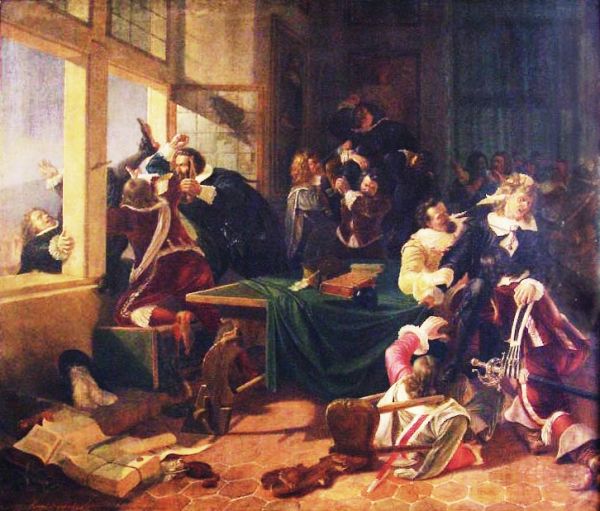
Remember when you first learned the word "defenestration"? It means throwing someone out of a window. You were probably amused that there was a word for such a specific act, yet you were also appalled because it happens enough to require a word. While the word depends on Latin roots, it is from the Czech language, called Bohemian at the time. In fact, defenestration has a long history in what is now the Czech Republic, or Czechia.
The most famous incident was in 1618, when Prague's Catholic authorities were frustrated with a growing group of Protestants, and wanted to put them in their place by rolling back their rights. But the Protestant group had grown quite large, and descended upon Hradčany Castle to carry out punishment for the two Catholic deputies who were persecuting them. They threw the two men out the window of a tower, 40 feet up, and threw out the secretary that accompanied them for good measure. One held onto the ledge and begged for mercy from the Virgin Mary, yet he ended up defenestrated anyway. But then, the three men got up and walked! The accounts of the event written by Catholics held that the virgin saved them, while other accounts noted that the men fell onto a trash and dung heap, which softened their fall.
There was a lot of art devoted to the 1618 defenestration, but it was neither the first nor the last in Czech history. The act became associated with religious and/or political rebellion, and such acts sometimes ignited full wars. Read about the history of defenestration in Czechia at the Public Domain Review.
(Image credit: Karel Svoboda)





